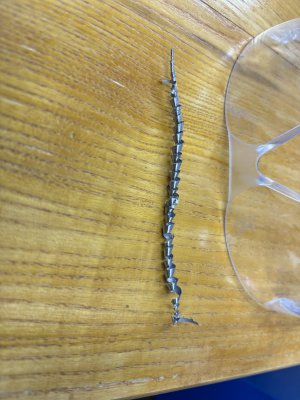In a lathe or press, something where the machine holds everything and a lever is used to apply pressure, one can drill 1/2 inch in a single pass.
If using a hand held motor, one may need to make smaller steps due to lack of motor torque or ability to apply pressure.
For anything above 3/16, too slow is better than too fast, increase pressure to get a good chip and good to go.
Smaller bits are too weak for this process as they need to take a smaller chip and use a higher rpm with tiny chip.
Oil is still critical as it keeps it lubricated and cool.
Smaller the drill, higher the speed, lower the pressure.
Sent from my SM-G781V using Tapatalk
If using a hand held motor, one may need to make smaller steps due to lack of motor torque or ability to apply pressure.
For anything above 3/16, too slow is better than too fast, increase pressure to get a good chip and good to go.
Smaller bits are too weak for this process as they need to take a smaller chip and use a higher rpm with tiny chip.
Oil is still critical as it keeps it lubricated and cool.
Smaller the drill, higher the speed, lower the pressure.
Sent from my SM-G781V using Tapatalk


